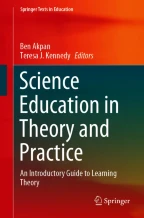
Multiple intelligences theory (MI) developed by Howard Gardner, an American psychologist, in late 1970s and early 1980s, asserts that each individual has different learning areas. In his book, Frames of Mind: The Theory of Multiple Intelligences published in 1983, Gardner argued that individuals have eight different intelligence areas and added one more intelligence area in the later years. Howard Gardner named these nine intelligence areas as “musical–rhythmic”, “visual–spatial”, “verbal–linguistic”, “logical–mathematical”, “bodily–kinesthetic”, “interpersonal”, “intrapersonal”, “naturalistic”, and “existential intelligence. Gardner indicates that these intelligences are constructed through the participation of individuals in culturally valued activities, and these activities help individuals to develop unique patterns in their mind. Multiple intelligences theory states that there are many ways to be intelligent not only just two ways measured by IQ tests. Appearance of multiple intelligences theory has provided significant practices and studies particularly in the field of education to be carried out and has changed educators’ views toward the concepts of learning and intelligence. This chapter discusses the historical and theoretical dimensions of multiple intelligences as well as the research conducted on the theory. We have also provided the advantages and disadvantages of MI implementation in science education.
An intelligence is the ability to solve problems, or to create products, that are valued within one or more cultural settings.
Howard Gardner—Frames of Mind (1983).
This is a preview of subscription content, log in via an institution to check access.